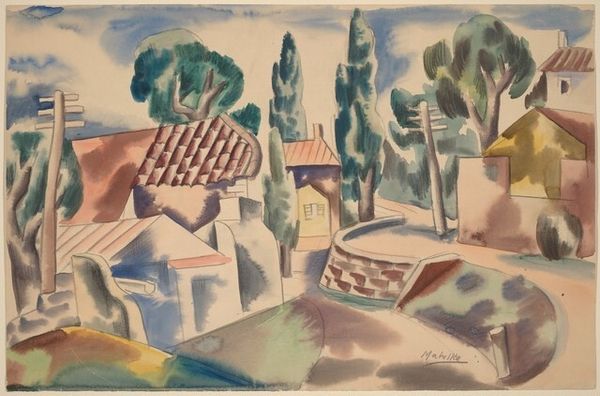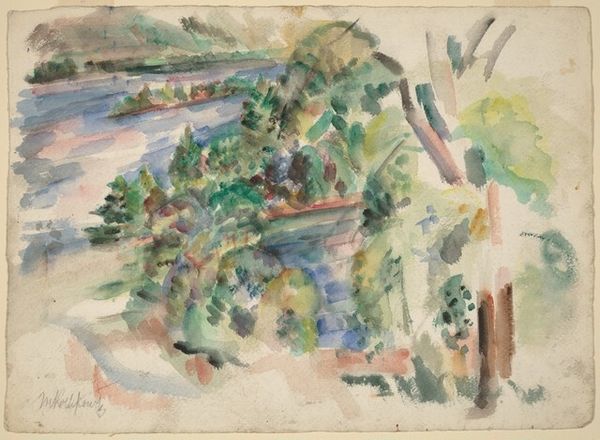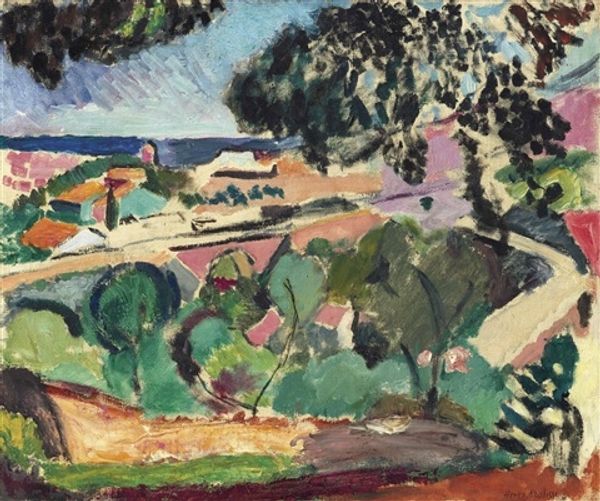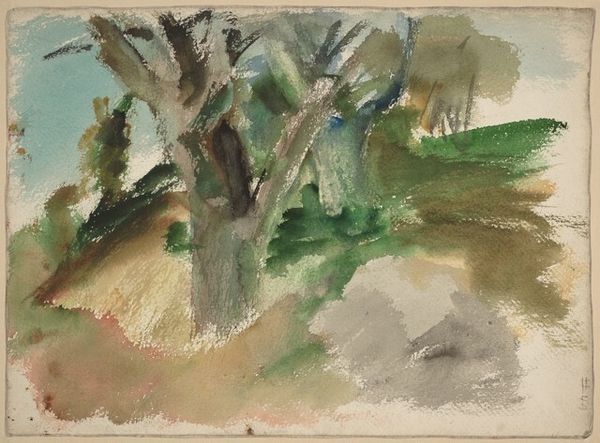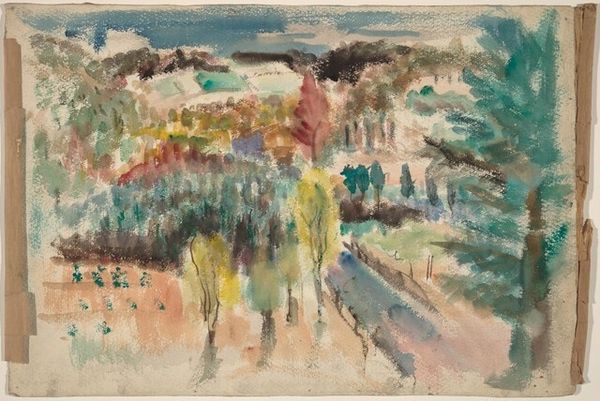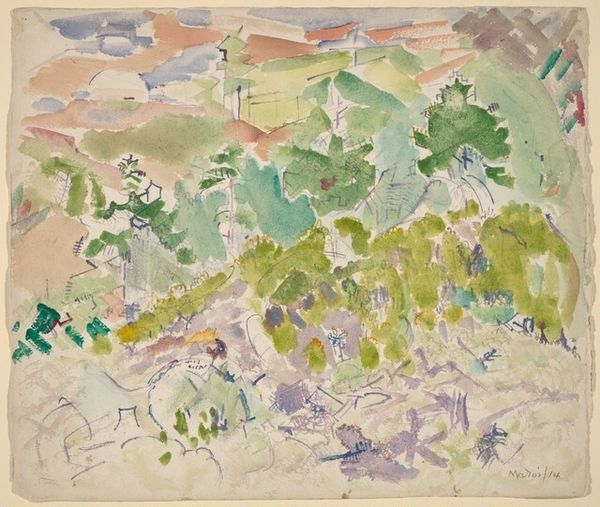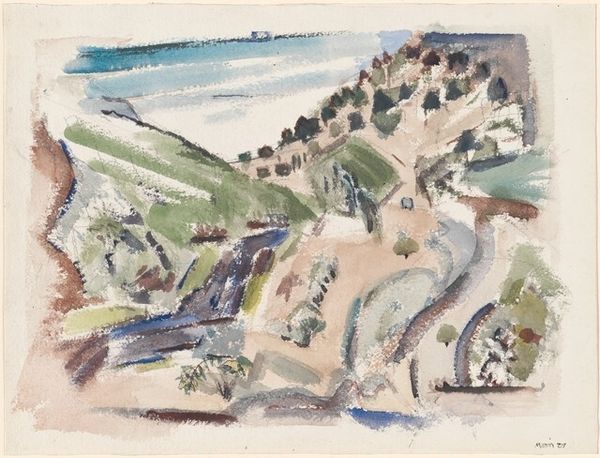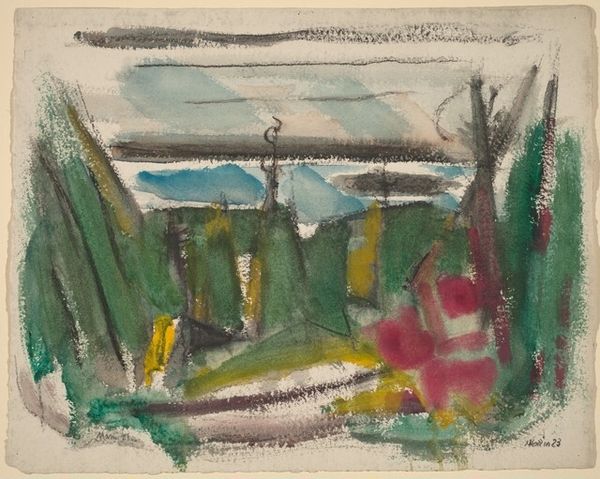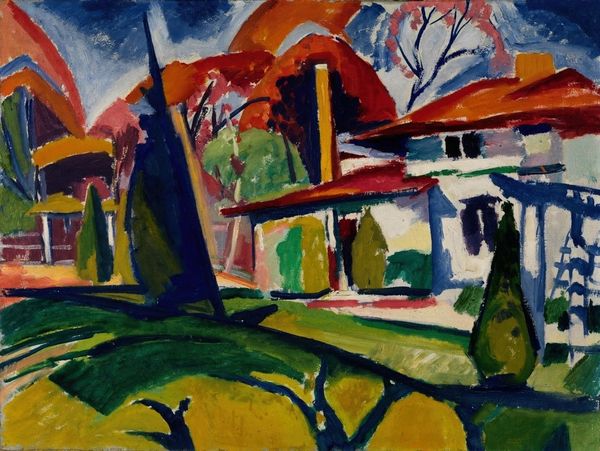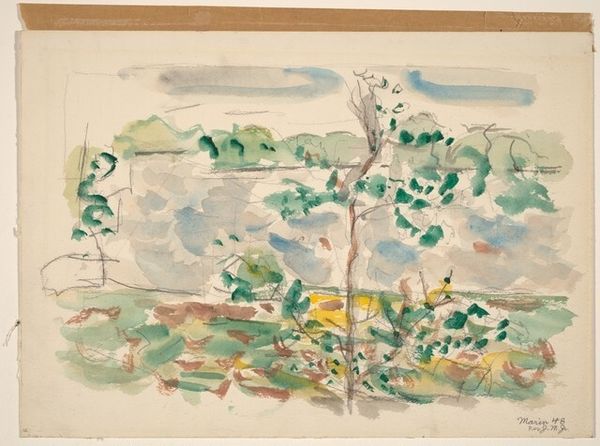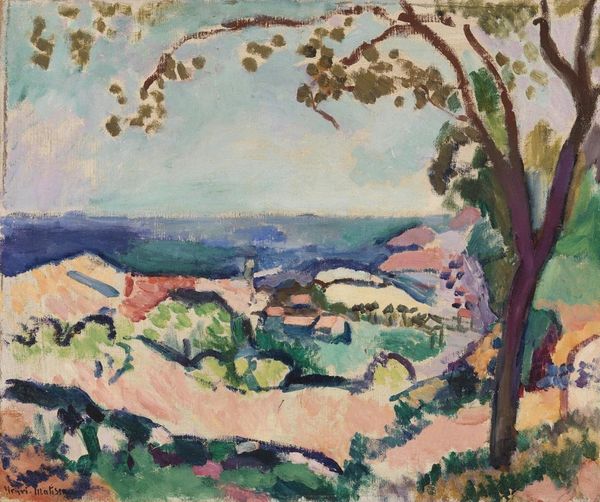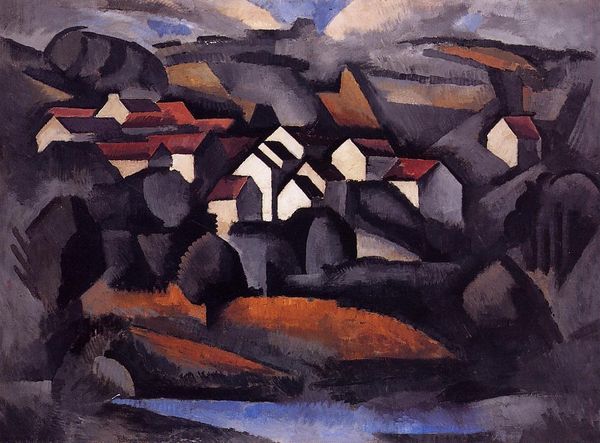
drawing, painting, watercolor
#
drawing
#
painting
#
landscape
#
watercolor
#
abstraction
#
cityscape
#
modernism
Dimensions: overall: 38 x 55.4 cm (14 15/16 x 21 13/16 in.)
Copyright: National Gallery of Art: CC0 1.0
Curator: Up next is Jan Matulka's "Landscape with Footbridge," painted around 1925. What are your initial impressions? Editor: It’s quite dreamlike. The watercolor washes create a soft, almost hazy atmosphere. The colours are muted, yet there’s a strange energy about the distorted, almost cubist forms of these buildings. Curator: Exactly! The painting showcases a fascinating tension. Look closely at how Matulka uses colour to define shapes, moving away from traditional shading techniques. The juxtaposition of these structures almost melts away their form. This approach challenges our conventional notions of perspective and spatial representation. Editor: But I’m also struck by what seems to be the absence of any people within this setting. With these oddly colored and shaped homes and almost monstrous trees it speaks of the sense of alienation so present during that period, immediately following the close of The Great War. Is there some comment on the move away from nature, with the bridge leading to structures that no one occupies? Curator: Interesting. I see more the synthesis of nature and abstraction, influenced perhaps by his European training and the early stages of Modernism. Think about how Matulka, a Czech émigré in America, processes both European modernism and American subject matter into a new visual language. Editor: True, but it's hard not to interpret this cityscape in relation to the interwar climate, as the structures become almost anthropomorphic, alienated yet communal, decaying yet hopeful of repair and return. The entire setting strikes a certain tension about modern progress. It leaves you feeling unsettled. Curator: Perhaps both. Ultimately, it reveals Matulka’s exploration of the poetics of form. A careful construction of planar recession with overlaid watercolour offers, ultimately, something both unsettling and beautiful. Editor: Absolutely. It speaks to the ways art both absorbs and transcends social conditions, offering not just aesthetic experiences, but also critical reflections of its time.
Comments
No comments
Be the first to comment and join the conversation on the ultimate creative platform.
